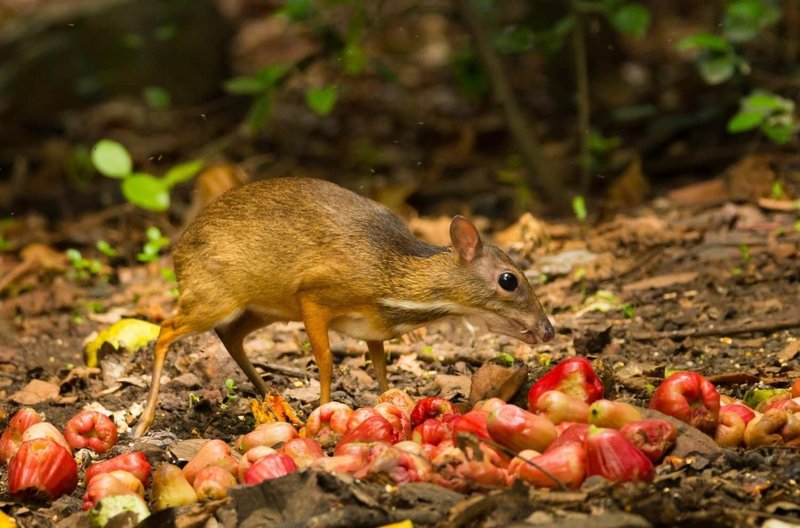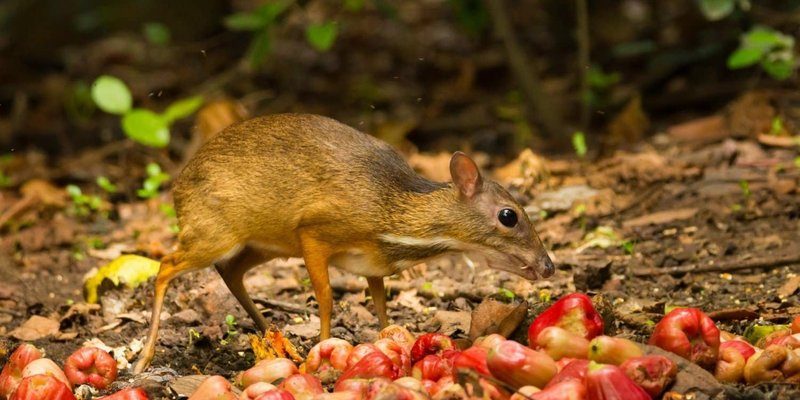
Mouse deer are found in various tropical regions, primarily in Southeast Asia and parts of Africa. They’re often elusive and prefer thick undergrowth, where they can munch on leaves, fruits, and other plants. But what’s really interesting is how these little critters manage to survive and thrive in their environments. Their diet and hunting strategies play crucial roles in their day-to-day life, providing the nutrients they need and helping them evade predators. So, let’s dive into the world of mouse deer and explore what makes their diet and hunting techniques so captivating.
Understanding the Mouse Deer’s Diet
Mouse deer are strictly herbivorous, meaning they eat only plant-based foods. Their menu consists mainly of leaves, fruits, and tender shoots, which they find by foraging in their forest habitats. The variety in their diet is quite impressive. You might be wondering how a creature so small can find enough food in a dense forest. Let me explain.
These little deer are experts at locating food. They use their keen sense of smell and excellent eyesight to navigate through the foliage. Here’s what you might find on a mouse deer’s plate:
- Leaves: Fresh, green leaves are a staple in their diet. They prefer softer leaves that are easier to chew and digest.
- Fruits: When fruits are in season, mouse deer love to munch on berries and other small fruits that grow within their reach.
- Tender shoots: The young, soft stems of plants are rich in nutrients and are a favorite snack.
They often graze at dawn or dusk, which is when many animals are out and about. Being active during these times helps them avoid larger predators and take advantage of the cooler temperatures.
Hunting Strategies: Why Mouse Deer Are Not Your Average Deer
Now, you might think, “Hunting? But aren’t they herbivores?” Well, here’s the thing—mouse deer aren’t about hunting in the traditional sense. Instead, they’ve developed incredible survival tactics for avoiding predators. Their strategy is more about evading than attacking.
Mouse deer are masters of camouflage. Their brownish coat blends seamlessly with the forest floor, making it challenging for predators to spot them. They often freeze when they sense danger, allowing them to vanish into their surroundings. This stealthy behavior is crucial for survival, especially when larger animals like leopards or wild boars are near.
But there’s more. Mouse deer also have an unusual escape strategy: they run in zig-zag patterns. By changing direction quickly and unpredictably, they can confuse predators and make it harder for them to pursue. It’s a simple tactic, but it works wonders!
Foraging Techniques: How They Find Food
For mouse deer, foraging for food is an art form. They have a unique method of searching for their meals, which involves both patience and skill.
First off, they often rely on their excellent sense of smell. This helps them locate food sources hidden under thick shrubs or leaves. Once they catch a whiff of something tasty, they carefully approach, moving slowly to avoid startling any potential dangers nearby.
Also, mouse deer are known for their grazing habits. They tend to munch on one area thoroughly before moving on to the next. This method not only helps them stay full but also minimizes the risk of exposure to predators. Think of it as a stealthy buffet—one that allows them to savor every bite while remaining cautious.
Another interesting aspect is their social behavior. While they’re primarily solitary animals, some mouse deer may forage together, which can offer safety in numbers. When they do this, they take turns keeping lookout for danger, ensuring that at least one of them can spot an approaching threat.
Seasonal Changes in Diet
Just like many animals, mouse deer adjust their diet based on seasonal changes. During the wet season, they enjoy a bounty of fresh leaves and fruits. However, when the dry season hits, their food sources may dwindle.
During these tougher times, they become more resourceful. Mouse deer can adapt by munching on tougher plant parts or even scavenging for what they can find. Here’s a quick breakdown of how their diet shifts:
- Wet season: Abundant leaves and fruits, offering a variety of choices.
- Dry season: Shift to tougher, more fibrous plants that are still nutritious.
This flexibility in their eating habits is key to their survival, allowing them to thrive in various conditions despite the challenges they face.
Role in the Ecosystem
Mouse deer play an important role in their ecosystems. By feeding on plants, they help regulate vegetation growth. This can prevent certain plants from becoming too dominant, ensuring a healthy balance in their environments.
Additionally, their foraging habits contribute to seed dispersal. When they eat fruits, they help spread seeds through their droppings, promoting plant growth in new areas. This kind of interaction demonstrates how interconnected nature can be.
In a sense, mouse deer serve as both grazers and gardeners of their habitats. They help maintain the health and diversity of the environments they inhabit, which in turn supports a wide range of other species.
Predation and Survival Challenges
Despite their fascinating adaptations, mouse deer are not without threats. Their small size makes them vulnerable to a variety of predators, including snakes, birds of prey, and larger mammals.
One of the biggest challenges they face is habitat loss due to deforestation and human encroachment. As their homes shrink, getting food and avoiding predators becomes increasingly difficult. This is not just a concern for mouse deer but for the entire ecosystem that relies on them.
To survive in these changing environments, mouse deer must be incredibly adaptable. Over time, they’ve developed not only physical traits to evade predators but also behavioral changes to find food and shelter.
The mouse deer may be small and often overlooked, but they have a lot going for them. Their unique diet and clever strategies for avoiding predators highlight just how diverse life can be in the animal kingdom. Through camouflage, zig-zagging escapes, and meticulous foraging, these little creatures thrive where many others might falter.
As we learn more about mouse deer, we can appreciate their role in maintaining the health of tropical ecosystems. So next time you think about deer, remember to include their tiny cousins. They may not stand out in size, but their impact is anything but small. Keep exploring the wonders of nature, and you’ll always find something new to marvel at!

